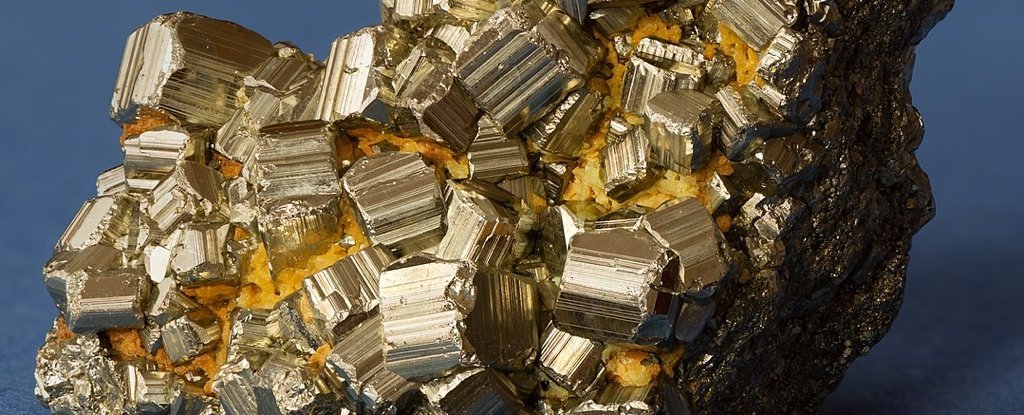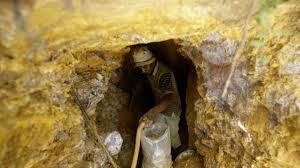Unlocking the Mystery Behind “Fool’s Gold”: Understanding Pyrite
Pyrite, often referred to as “Fool’s Gold,” has intrigued both scientists and treasure hunters for centuries. This mineral, with its shiny, brassy appearance, has a long history of mistaken identity and fascination. Let’s delve into the depths of what makes pyrite so unique and why it holds significance beyond its deceptive allure.
What is Pyrite?
Pyrite, scientifically known as iron sulfide, is a common mineral found in sedimentary rocks around the world. Its distinctive metallic luster and pale brass-yellow hue make it easily mistaken for gold, hence the nickname “Fool’s Gold.”
Formation and Characteristics
Pyrite forms in a variety of geological environments, including sedimentary, metamorphic, and hydrothermal settings. Its cubic crystal structure and brittle nature distinguish it from true gold. Despite its resemblance, pyrite lacks the malleability and softness of gold, making it less valuable.
Industrial and Economic Importance
While pyrite lacks the intrinsic value of gold, it holds significance in various industrial applications. It is a source of sulfur used in the production of sulfuric acid, a crucial component in many industrial processes. Additionally, pyrite’s presence in certain geological formations can indicate the potential for valuable mineral deposits.
Environmental Impacts
Despite its industrial utility, pyrite can pose environmental challenges. When exposed to air and water, pyrite can undergo a chemical reaction known as “pyrite oxidation,” producing sulfuric acid and iron hydroxide. This process, commonly known as “acid mine drainage,” can lead to environmental contamination and ecosystem disruption.
Conclusion
In conclusion, understanding the properties and significance of pyrite, or “Fool’s Gold,” is essential for various fields, including geology, mining, and environmental science. While it may not possess the allure of true gold, pyrite’s unique characteristics and industrial importance make it a mineral worthy of study and exploration.

Why this News is Important:
Exploring Pyrite: Unraveling the Mystery
The identification and understanding of pyrite, commonly known as “Fool’s Gold,” hold significant importance across various disciplines. Let’s delve into why this news is crucial.
Exploring Pyrite’s Properties:
Understanding the distinctive properties of pyrite, including its metallic luster and cubic crystal structure, is essential for geologists and mineralogists. This knowledge aids in accurate mineral identification and geological exploration.
Industrial Applications:
Pyrite serves as a source of sulfur for sulfuric acid production, a vital component in numerous industrial processes. Knowledge of pyrite’s industrial importance is crucial for industries reliant on sulfuric acid.
Environmental Impacts:
The potential for pyrite oxidation and acid mine drainage underscores the importance of studying pyrite’s environmental impacts. Awareness of these issues is critical for mitigating environmental damage associated with mining activities.
Geological Significance:
Pyrite’s presence can indicate the potential for valuable mineral deposits in geological formations. Understanding pyrite’s geological significance aids in mineral exploration and resource assessment.
Educational Value:
Exploring the properties and significance of pyrite provides valuable educational insights for students pursuing careers in geology, mining, and environmental science. This knowledge enhances their understanding of Earth’s processes and natural resources.
Historical Context:
The Legacy of “Fool’s Gold”
Pyrite’s association with gold and its deceptive appearance have captivated humans for centuries. Let’s explore the historical context behind the fascination with this enigmatic mineral.
Ancient Beliefs and Alchemy:
Throughout history, pyrite’s resemblance to gold fueled myths and superstitions. Ancient civilizations, including the Greeks and Romans, believed pyrite possessed mystical properties and could transmute into gold through alchemical processes.
Gold Rush Era:
During the 19th-century Gold Rush era, prospectors often mistook pyrite for gold, leading to disappointment and frustration. The prevalence of pyrite in gold-bearing regions added to the challenges of gold prospecting.
Scientific Discoveries:
Advancements in mineralogy and scientific understanding in the 19th and 20th centuries revealed the true nature of pyrite and its distinct properties. This period marked a shift from mysticism to scientific inquiry regarding pyrite’s composition and significance.
Modern Applications:
In contemporary times, pyrite continues to play a vital role in various industries, including mining, metallurgy, and manufacturing. Scientific research has elucidated pyrite’s industrial applications and environmental impacts, shaping its contemporary significance.
Key Takeaways from “Which Mineral is Known as Fool’s Gold?”:
| Serial Number | Key Takeaway |
|---|---|
| 1. | Pyrite, or “Fool’s Gold,” is a common mineral with a brassy appearance resembling gold. |
| 2. | Despite its deceptive allure, pyrite lacks the intrinsic value and malleability of gold. |
| 3. | Pyrite serves as a source of sulfur for sulfuric acid production and has various industrial applications. |
| 4. | The oxidation of pyrite can lead to environmental challenges, including acid mine drainage. |
| 5. | Understanding pyrite’s properties and significance is crucial for geological exploration and environmental stewardship. |
Important FAQs for Students from this News
Q1. What are the main characteristics of pyrite?
A1. Pyrite is characterized by its metallic luster, pale brass-yellow color, and cubic crystal structure.
Q2. How is pyrite different from gold?
A2. Unlike gold, pyrite lacks malleability and is more brittle. It also has a lower density and is not as valuable.
Q3. What are the industrial applications of pyrite?
A3. Pyrite is used as a source of sulfur for sulfuric acid production and has applications in various industries, including metallurgy and manufacturing.
Q4. What environmental challenges are associated with pyrite?
A4. Pyrite oxidation can lead to acid mine drainage, which causes environmental contamination and ecosystem disruption.
Q5. Why is understanding pyrite important for students preparing for government exams?
A5. Knowledge of pyrite’s properties, industrial significance, and environmental impacts is essential for exams related to geology, mining, and environmental science.
Some Important Current Affairs Links


















 Exciting News!
Exciting News!  Join Our Telegram Channel Now!
Join Our Telegram Channel Now!
 Join our Telegram channel for a thrilling adventure into the world of daily current affairs.
Join our Telegram channel for a thrilling adventure into the world of daily current affairs. 
 Don’t miss out on the latest updates and insights! Click to join now and be part of the knowledge revolution!
Don’t miss out on the latest updates and insights! Click to join now and be part of the knowledge revolution! 
